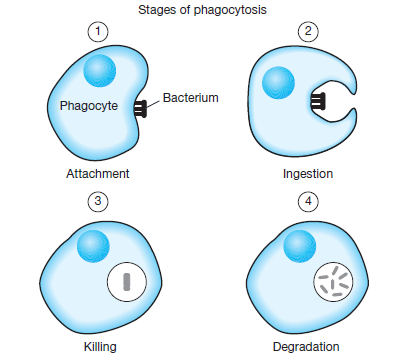Blood Cells

Red Blood cells/erythrocytes
-they are formed
in red bone marrows of the ribs, skull and vertebrae
-survive for
approximately 120 days and are then destroyed in the liver and spleen
Structure and
Function
-contains no
nucleus: this allows more room for haemoglobin (also: cells cannot divide/reproduce )
-they have
biconcave disc shape to increase surface area
-contains
hemoglobin that allows the transport of oxygen
White Blood cells/Leucocytes
a. Phagocytes
Function: They
engulf and digest invading bacteria and viruses.
Structure:
-their shape may vary
-they move using pseudopodia
-its nucleus is lobed shape
-they are formed in red bone marrows
b. Lymphocytes
-they are made in lymph
glands and spleen
Function: They produce antibodies (proteins) that
fight antigens (foreign protein) that are made
by disease causing organisms (pathogens)
Platelets/ Thrombocytes
Function: They help blood to clot, if there is a
cut in skin. The platelets would gather at broken blood
vessels to make a temporary plug, preventing the loss of blood.
Structure: -Lacks nucleus
-made of small pieces of
cells



Comments
Post a Comment